Rust Family Foundation: Archaeology Grants Program
Grave of the Griffin Warrior, Pylos, Greece
[RFF-2018-56]Principal Investigator:
Sharon R. Stocker, Department of Classics
University of Cincinnati
Importance of Research
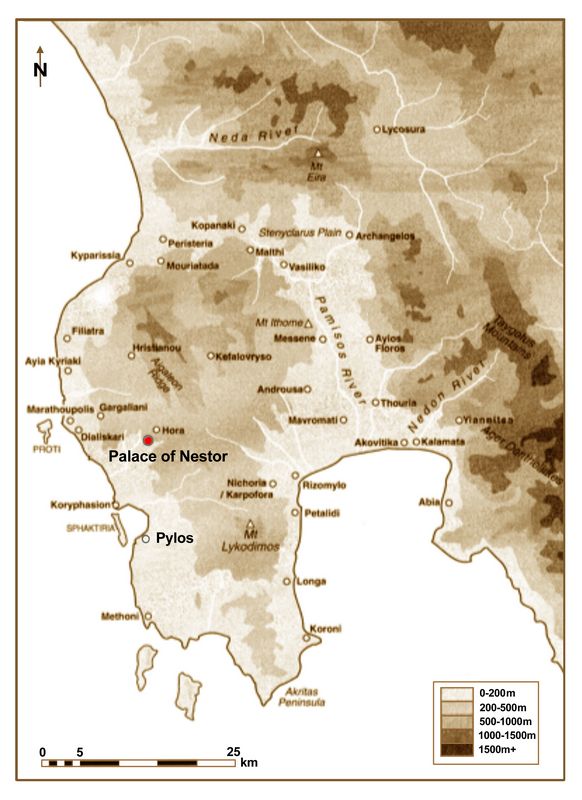 On the first day of excavation in 2015, near the site of the Palace of
Nestor at Pylos (fig.1), we uncovered the corner of a stone-built
shaft, which turned out to be the first undisturbed grave of its kind,
discovered since the 1950s in Greece (fig. 2). More than 3000
individual objects accompanied the burial of a single man, who was
30-35 years old at the time of his death. The body had been buried in a
wooden coffin, and grave offerings placed in and on top of the coffin
and in the shaft around it.
On the first day of excavation in 2015, near the site of the Palace of
Nestor at Pylos (fig.1), we uncovered the corner of a stone-built
shaft, which turned out to be the first undisturbed grave of its kind,
discovered since the 1950s in Greece (fig. 2). More than 3000
individual objects accompanied the burial of a single man, who was
30-35 years old at the time of his death. The body had been buried in a
wooden coffin, and grave offerings placed in and on top of the coffin
and in the shaft around it. Fig.1: Southwestern Greece showing the location of the Palace of Nestor.
These objects included stone and metal beads, other jewelry, sealstones, carved ivories, metal vessels (gold, silver, and bronze), and bronze weapons. We soon realized that a majority of the metal objects (and some others) preserve on their surfaces traces of mineralized cloth and sometimes actual textile fibers.
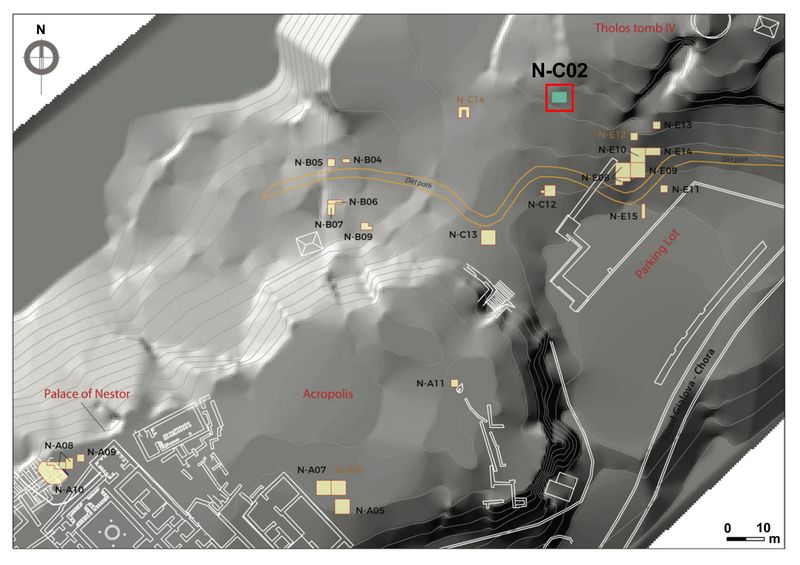
Fig.2: Map of the area of the Palace of Nestor, showing the location of the grave of the Griffin Warrior (N-C02)
Previous Research in the Region
The Palace of Nestor at Pylos and associated cemeteries were first discovered and explored in 1939. By the late 1960s, its entire plan, the best-preserved palace of any Mycenaean king, had been exposed, and along with it the largest archive of tablets in the so-called Linear B script (the earliest Greek records) yet discovered on the Greek mainland. In the 1990s, archaeological surface survey defined the extent of the town that surrounded the acropolis on which the palace stood. In 2015 the current University of Cincinnati team began a new program of excavations that led to the discovery of the grave of the Griffin Warrior (figs.3,6).
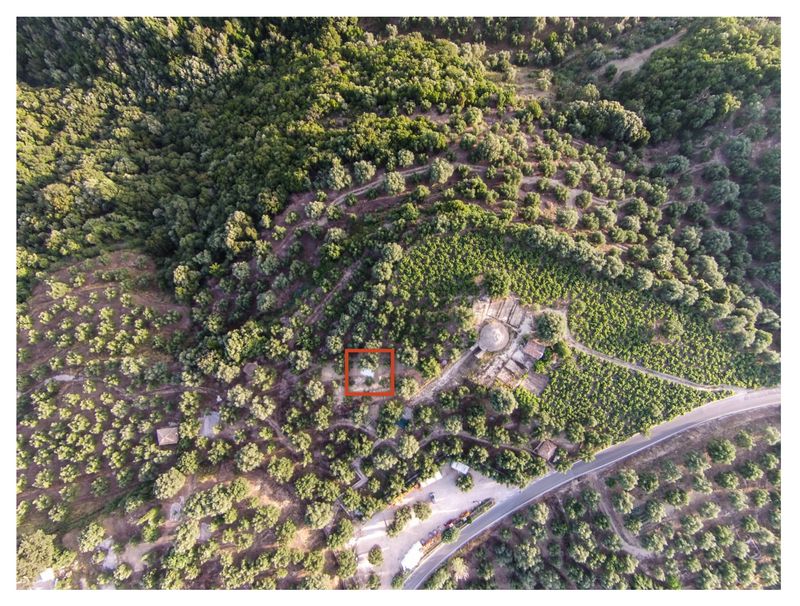 Fig.3: Drone view of the grave of the Griffin Warrior (in red box).
Fig.3: Drone view of the grave of the Griffin Warrior (in red box).Current Project (RFF-2018-56)
Goals:
Our objectives were principally to determine the extent to which evidence for textiles
(and other organic materials) was present among objects from the grave, and to develop a protocol for conserving such finds and for documenting the organics.
Methodology:
Initial examination of the metal finds from the grave of the Griffin Warrior led us
to suspect their study had the potential of yielding a unique new body of information about textiles of the Greek Bronze Age. We were able in 2018 to pursue this hunch much further with support from the Rust Family Foundation. In fact, all metal vessels that we have examined thus far have evidence for textiles on their exteriors and rims, and some may preserve evidence for textiles in their interiors. In particular, all silver vessels were in contact with textiles. After establishing a conservation laboratory in our field headquarters near the excavation, conservator Julie Unruh established protocols for conserving and documenting organic and mineralized organic remains from the grave. Unruh instructed other conservators in the established procedures so that conservation of such finds could continue in her absence. Methods employed consisted of high-power binocular microscopy and high-power digital photography.
Results:
Finds from the grave of the Griffin Warrior were examined to identify and characterize evidence for degraded organic material in the burial — largely of the sort known as “pseudomorphs.” A total of 31 objects was examined, chosen because prior investigation had flagged them as likely to preserve traces of organic remains. In total, over 200 measurements were taken on structures that may preserve evidence for organic materials buried in the tomb.
Several clear wood fragments or pseudomorphs of wood or plant material were observed. One excellent example is presumed to be a part of the planking of the coffin that held the body of
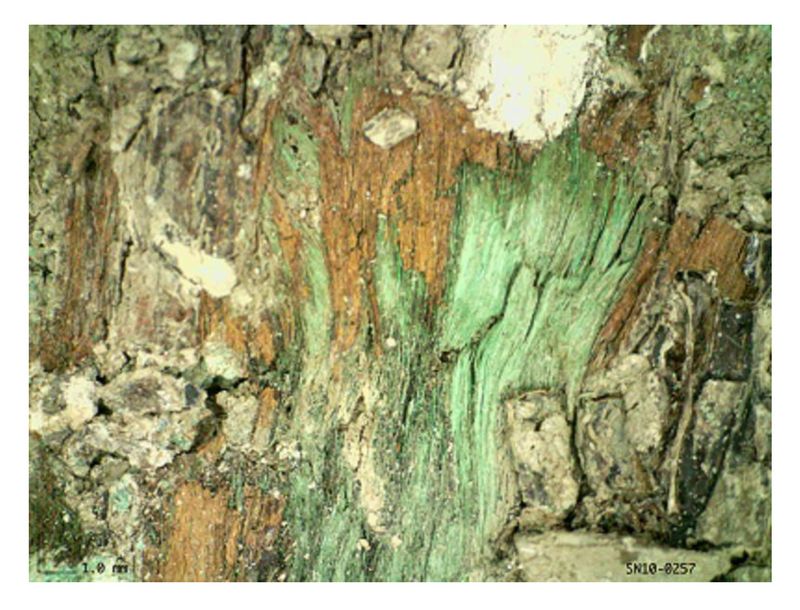 the Griffin Warrior (fig.4).
the Griffin Warrior (fig.4).Fig.4: Organic and mineralized wood.
Pseudomorphs of crossed plant material may be indications of a woven mat or basketry. The existence of multiple textiles in the tomb is definite (fig.5).
It would be premature to speculate about the total number of textiles in the grave. That said, it is likely that textiles were ubiquitous in the tomb. Of weaves that could be characterized with some certainty:
43% were balanced weaves;
31% were unbalanced weaves;
26% were faced weaves.
Faced weaves may be of particular interest, because one reason to weave a faced structure is to weave a decorative pattern. Preliminarily, it seems several structures are grouped at counts below 10 threads/cm in both systems, with small yarn diameters of less than 0.1 mm. If these measurements can be verified, they indicate gauze-like structures. The majority of the structures fall loosely, however, into a second group, composed of textiles with thread counts between 12 and 19 threads/cm in both systems, and yarn diameters between 0.2 and 0.5 mm. The yarn diameters include both single ply and 2-ply yarns. The textiles in this range contained a mix of balanced weaves, faced weaves, and open weaves.
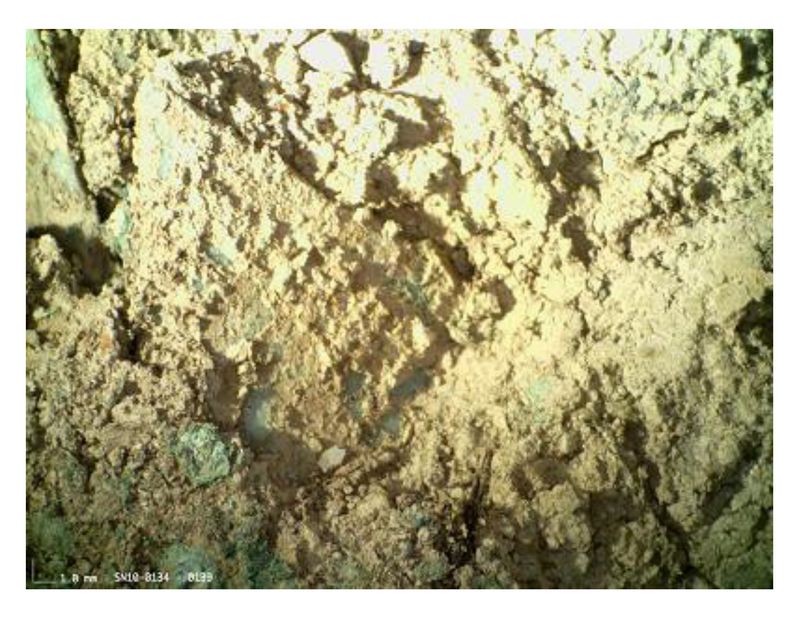 Fig.5: Weave structure in the soil on a group of boars' tusks.
Fig.5: Weave structure in the soil on a group of boars' tusks.S-twisted yarns predominate. Most of those are believed to be S-plied yarns rather than s-spun elements. Spin directions were harder to determine, but z-spun elements may predominate. It may be culturally significant that no yarns with more than 2-ply were observed. If a z-spin generally denotes wool, as has been proposed, and if the majority of the textile elements are z-spun, S-plied, there may be a predominance of wool.
Felt refers to a non-woven fabric composed of unspun hair fibers in random configurations. Textiles woven from hair fiber yarns can also be deliberately “felted”, producing a
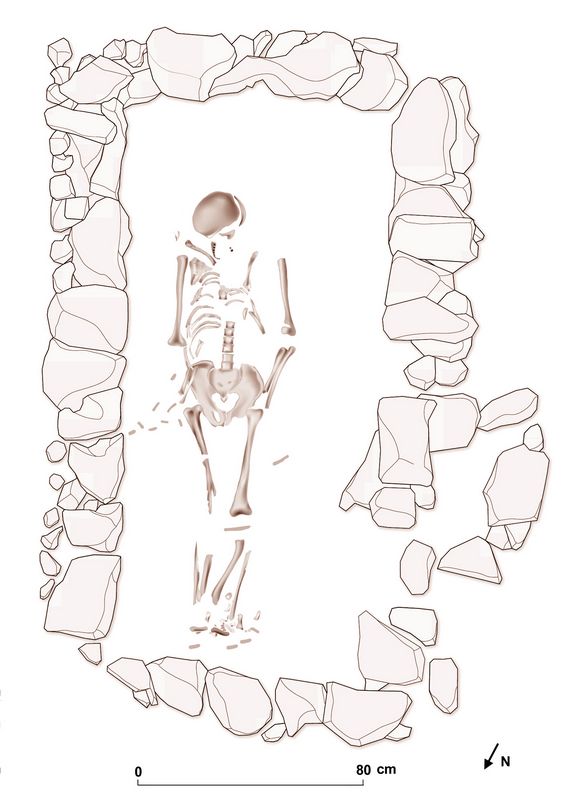 fuzzy, woven fabric. “Felt” may be present on artifacts from the grave, including armor fragments.
fuzzy, woven fabric. “Felt” may be present on artifacts from the grave, including armor fragments.On several objects but notably on boars’ tusks (fig.5), a puzzling construction was seen where regular, open grids exist in combination with v-shaped or 8-armed star-shaped patterns of ~0.2 – 0.3 mm elements, crossed at both 45- and 90- degree angles in an open structure. The weave structure was not entirely clear, but in several locations, it appeared to incorporate knotting. Two explanations are possible: that this is a variant of an interlinked structure on a foundation, or a variant of a weft-wrapped open weave.
Fig.6: Plan of the the grave of the Griffin Warrior, N-C02 (after D. Nenova in Davis and Stocker 2018, fig.2).
These results provide a solid foundation for further conservation and add substantially to our knowledge of prehistoric textiles in Greece, where, unlike Egypt, physical evidence has been extremely rare and seldom recognized.
Bibliography
Davis, Jack L. and Sharon R. Stocker, 2016
“The Lord of the Gold Rings: The Griffin Warrior of Pylos,” Hesperia 85, pp. 627-655.
Stocker, Sharon R. and Jack L. Davis, 2017
“The Combat Agate from the Grave of the Griffin Warrior at Pylos,” Hesperia 86, pp. 583-604.
Davis, Jack L. and Sharon R. Stocker, 2018
“The Necklace of the Griffin Warrior,” Hesperia 87, pp. 611-632. With an appendix by A. Karydas, V. Kantarelou, and M. Kaparou.
Recent Foundation grants: general Archaeology Grants Program w/map
Copyright © 2019 Rust Family Foundation